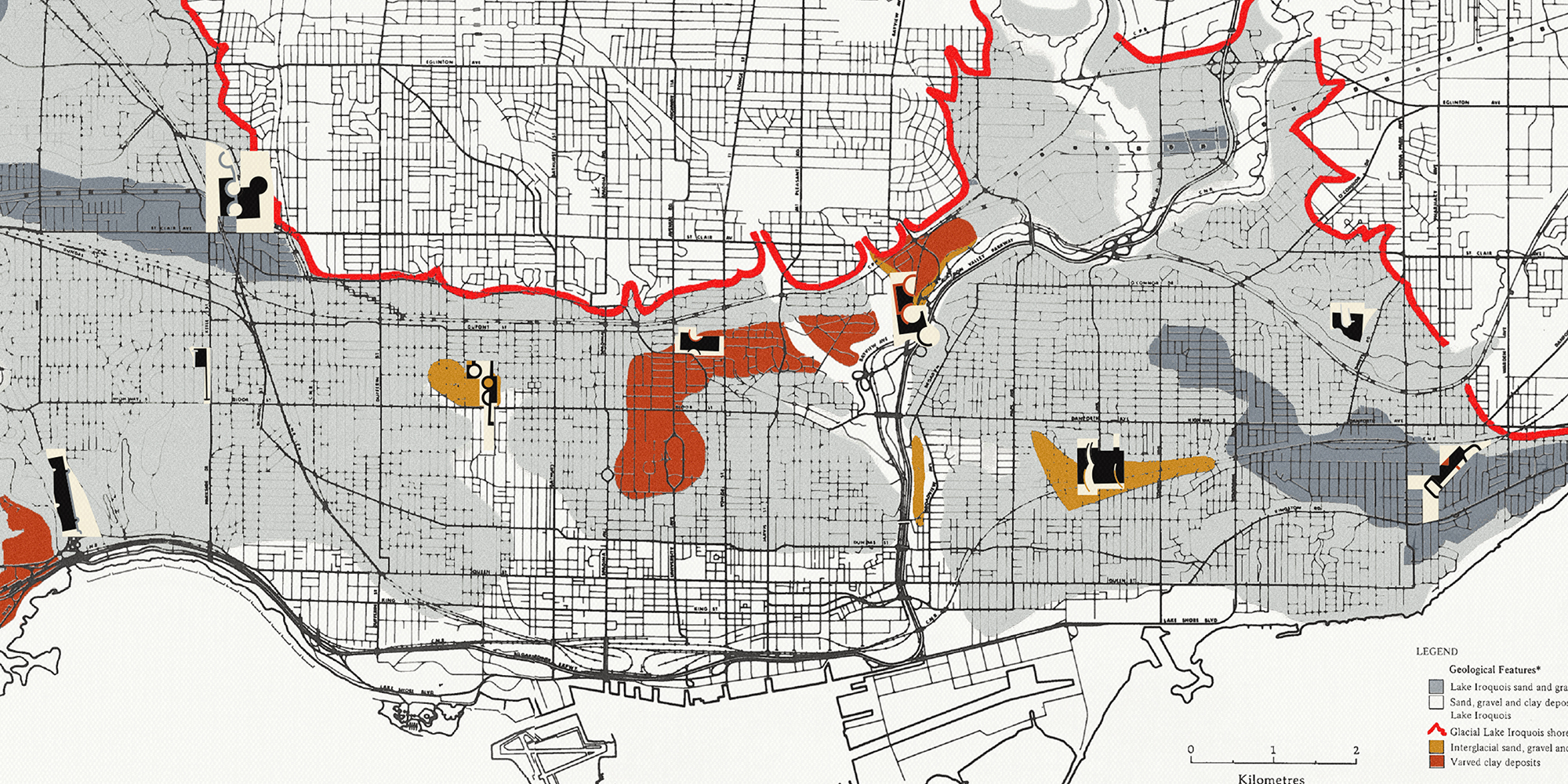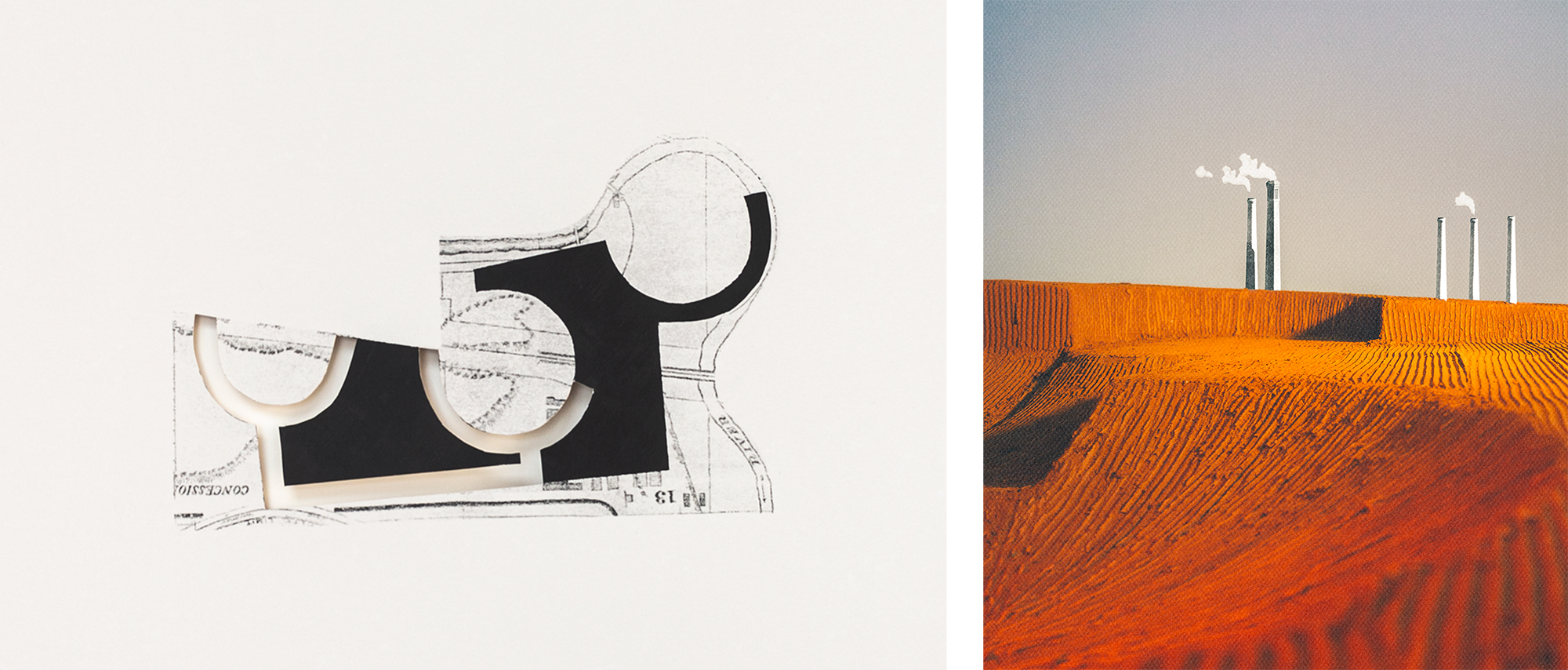
Bobbi Bortolussi, "Equipment for Architecture"
Despite obvious differences in their objectives, quarries and land art find common ground in the scale at which they deform the earth’s surface. In the 1970s, land artists Robert Smithson, Walter de Maria, and Michael Heizer flirted with the problematic merging of these two cultural acts. The idea of "mining based on aesthetics," as Smithson put it, was a sensibility that could be felt throughout the body of work produced by this group — but, as a concept, it was never explicitly put into practice.
Bobbi’s thesis project builds upon this idea by using Toronto as a test plot for enacting aesthetics-based mining as an alternative to common mining rehabilitation practices.
The industrialization of Lake Ontario’s northern shore has, since European contact, revolved around the extraction of clay-rich soils deposited by the receding shoreline of Lake Iroquois. By the turn of the 20th century, more than 30 quarries operated in Toronto, fueling an industry that produced 100 million bricks per season. Some of these extraction sites have been obscured by years of alterations, yet many remain as prominent figures within the city landscape. Christie Pits, Brick Works Park, Ramsden Park, and others are all byproducts of the "Pits to Playgrounds" framework developed by the Ontario Ministry of Natural Resources.
“These parks have smoothed the land to leave little evidence of their dramatic industrial predecessors,” Bobbi says. “I could see that the more irregular, complex quarries sites have resulted in the richest adapted spaces.”
Armed with these observations, Bobbi began to imagine a series of radical quarry landscapes that could serve as progenitors for an alternative Toronto. Rather than attempting to layer an artistic concept onto something as pragmatic as quarrying, Bobbi decided to design mining equipment that could serve as a hinge point between aesthetic and industrial desires.
Bobbi created a series of videos in which she investigated how clay could be shaped by different tools. Here's a "bench scraper," which digs into clay at right angles:
Her final excavation machine took the form of a colossal bucket suspended between two massive wheels that roll around the site, similar to the drag-line excavators used in conventional quarries.
“The machine simultaneously equips both the miner and architect with a tool from which to work,” Bobbi says. From this common ground, a palette of monumental gestures arise. The machine simply rolls around the site, following the rules of its design, leaving in its wake a series of pure geometric forms.
Here's a video of Bobbi’s excavation machine, which she calls a “catenary digger”:
Using archival maps of Toronto, Bobbi pinpointed the locations of nine different former mining sites in the city, all of which had been redeveloped in one way or another.
Here, for example, is her representation of an alternative landscape for the Don Valley Brick Works, a former quarry site located just north of downtown Toronto. To the left is a
drawing, and to the right is a model:

In Bobbi's aesthetic language, the blacked-out areas are portions of a site that would be excavated, and the blank areas (the ones that look as though they've been removed with a craft knife) are places where excavated soil would be deposited.
“Perhaps planning or designing the reuse of these post-industrial sites misses the mark," Bobbi says. "Does this not perpetuate the fragmentation of humanity’s most primordial act of cultivation: the moving of earth on a monumental scale?”
Advisor: John Shnier

